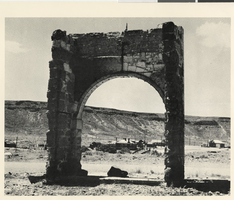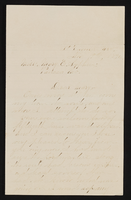Search the Special Collections and Archives Portal
Search Results
Bruce Turner Collection on Transportation and Water in Southern Nevada
Identifier
Abstract
The Bruce Turner Collection on Transportation and Water in Southern Nevada contains reports, publications, legal files, project proposals, journal articles, financial reports, photographs, and maps concerning transportation policy and water usage in Southern Nevada from 1980 to 2014. The collection contains documents from organizations including the Regional Transportation Commissions of Clark County and Southern Nevada, the Clark County Department of Air Quality and Environmental Management, Clark County Comprehensive Planning, the Urban Land Institute, the City of Las Vegas Neighborhood Services Department, the Southern Nevada Water Authority, and the Las Vegas Valley Water District.
Archival Collection

Center Street in Reno, Nevada: postcard
Date
Archival Collection
Description
Image

UNLV PEX instructors at the University of Nevada, Las Vegas: digital photographs
Date
Archival Collection
Description
Image

Film transparency of a ghost town, Delamar, Nevada, 1956
Date
Archival Collection
Description
Image

Film transparency of a ghost town, Delamar, Nevada, 1956
Date
Archival Collection
Description
Image

Film transparency of a ghost town, Delamar, Nevada, 1956
Date
Archival Collection
Description
Image
Rodefer, T. (editor), S. Selmi, J. Butler, and M. Naroll, 1996, Nevada Statistical Abstract 1996, Nevada Department of Administration, Carson City, Nevada, 1996
Level of Description
Archival Collection
Collection Name: Environmental Radiation Protection Standards for Yucca Mountain, Nevada
Box/Folder: Box 15
Archival Component
Anita Freeman Photograph Collection on Southern Nevada
Identifier
Abstract
The Anita Freeman Photograph Collection on Southern Nevada (1937-1972) primarily contains black-and-white negatives depicting locations in Southern Nevada, including the Hoover Dam, Lake Mead, and Mount Charleston. The collection also includes black-and-white negatives of the Helldorado Parade held in Las Vegas, Nevada, as well as landscapes in Arizona, such as the Grand Canyon.
Archival Collection

Photograph of ruins at Goldfield, Nevada, 1973
Date
Archival Collection
Description
Image

Letter from John M. Bunker, St. Thomas, Nevada to Mary Etta Syphus, Panaca, Nevada
Date
Archival Collection
Description
From the Syphus-Bunker Papers (MS-00169). The folder contains an original handwritten letter, a typed transcription of the same letter, and a copy of original letter attached.
Text
